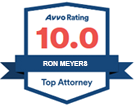Car accidents involving government vehicles pose unique legal complexities that can complicate the process of seeking compensation for victims. From determining liability to navigating governmental immunity laws, these cases require a nuanced understanding of the legal framework governing such collisions.
Let’s explore the intricacies of government vehicle accidents, such as the legal complexities, liability issues, and avenues for seeking compensation in Washington state. Whether you’re a victim of a government vehicle accident or seeking to understand your legal rights, this article aims to shed light on the challenges and potential solutions in these cases.
Understanding Government Vehicle Accidents
Government vehicle accidents encompass collisions involving vehicles owned, operated, or maintained by government entities, including federal, state, and local agencies. These vehicles may include police cars, fire trucks, ambulances, public transportation buses, and vehicles used by government employees in the course of their official duties. Government vehicle accidents can occur under various circumstances, ranging from routine traffic incidents to emergencies or pursuit situations.
Common Injuries in Government Car Accidents
Government vehicle accidents can result in a wide range of injuries for victims, varying in severity depending on the circumstances of the collision. Some of the most common injuries sustained in government car accidents include:
- Whiplash and Neck Injuries: Sudden impact or rear-end collisions involving government vehicles can cause whiplash, a soft tissue injury affecting the neck muscles and ligaments.
- Back and Spinal Cord Injuries: High-speed collisions or accidents involving rollovers can lead to back injuries, including sprains, strains, herniated discs, or more severe spinal cord injuries resulting in paralysis or loss of mobility.
- Traumatic Brain Injuries (TBIs): Head-on collisions or accidents involving significant force can cause traumatic brain injuries, ranging from concussions to more severe forms of brain damage, leading to cognitive impairments, memory loss, and other long-term complications.
- Fractures and Broken Bones: Impact with government vehicles or objects in the vehicle’s path can result in fractures or broken bones, including broken arms, legs, ribs, or pelvis, requiring surgical intervention and rehabilitation.
- Soft Tissue Injuries: Bruises, contusions, lacerations, and other soft tissue injuries are common in government car accidents, often resulting from the force of impact or contact with objects within the vehicle.
Legal Complexities of Government Vehicle Collisions
One of the primary legal complexities in government vehicle accidents is the issue of governmental immunity, which shields government entities and their employees from certain types of lawsuits and liability. While sovereign immunity protects government agencies from being sued without their consent, there are exceptions that may allow victims to pursue legal action in specific circumstances. These exceptions often involve situations where the government’s negligence or wrongful conduct contributed to the accident, such as negligent maintenance of vehicles, reckless driving by government employees, or failure to provide adequate training.
Another legal complexity in government vehicle collisions involves jurisdictional issues. Government entities often operate across multiple jurisdictions, including city, county, state, and federal levels. Determining which entity or entities bear responsibility for the accident and subsequent injuries can be challenging, particularly when multiple agencies are involved. Additionally, each jurisdiction may have its own set of laws, regulations, and procedural requirements governing claims against government entities, further complicating the legal process. Navigating these jurisdictional complexities requires careful analysis of the specific circumstances surrounding the accident and a thorough understanding of the relevant laws and regulations in each jurisdiction involved.
Liability in Government Vehicle Accidents
Determining liability in government vehicle accidents can be challenging due to the various factors involved, including the actions of government employees, the condition of government-owned vehicles, and compliance with traffic laws and regulations. In some cases, multiple parties may share liability for the accident, including the government agency, individual employees, third-party contractors, or even other drivers involved in the collision. Establishing liability often requires a thorough investigation, including gathering evidence, interviewing witnesses, and analyzing relevant laws and regulations.
Compensation for Government Vehicle Accident Victims
Victims of government vehicle accidents may be entitled to compensation for their injuries, medical expenses, lost wages, pain and suffering, and other damages resulting from the collision. However, pursuing compensation in these cases requires navigating the legal complexities of governmental immunity laws and compliance with specific procedural requirements for filing claims against government entities. In Washington state, the process for seeking compensation for government vehicle accidents may vary depending on the type of government agency involved and the nature of the claim.
Lawsuits Involving Government Vehicle Accidents
In cases where negotiations with government agencies or their insurers fail to reach a satisfactory settlement, victims may pursue lawsuits to seek compensation through the court system. Lawsuits involving government vehicle accidents require adherence to strict procedural rules and deadlines, including providing notice of the claim within a specified timeframe and filing the lawsuit within the statute of limitations. Additionally, lawsuits against government entities may be subject to additional legal defenses and procedural hurdles, making experienced legal representation essential for success.
Personal Injury Attorneys for Victims of Government Vehicles
Car accidents involving government vehicles present unique legal challenges and complexities that require experienced legal guidance to navigate effectively. From understanding governmental immunity laws to determining liability and pursuing compensation through the appropriate channels, victims of government vehicle accidents face numerous hurdles in seeking justice and recovering damages for their injuries. By working with knowledgeable attorneys who are experienced in handling government vehicle accident cases, victims can level the playing field and increase their chances of achieving a favorable outcome in their pursuit of justice.
With Ron Meyers and Associates’ extensive experience in handling government vehicle accident cases, we are well-equipped to assist clients in navigating the complex legal process and advocating for their rights. Our team understands the unique challenges and nuances involved in these cases, from dealing with governmental immunity laws to determining liability and pursuing fair compensation. We provide compassionate support and skilled representation to guide clients through every step of their legal journey, working tirelessly to achieve the best possible outcome for their case. If you’ve been injured in a government vehicle accident, trust our firm to fight for the justice and compensation you deserve. Contact us today to get started.





